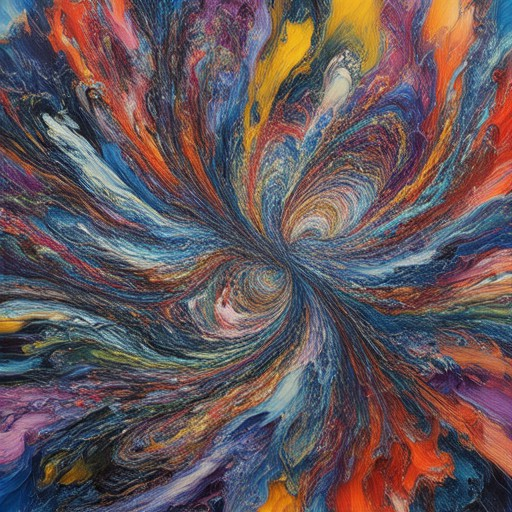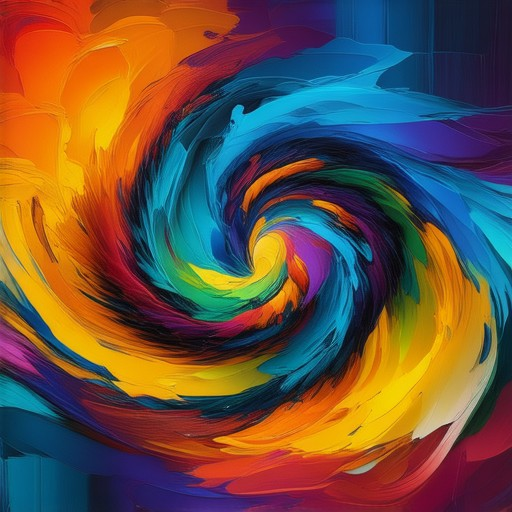Art has always been a powerful force in shaping human culture and daily life, offering a unique window into the soul of a society. At its core, creative expression in visual art stands as a cornerstone of artistic exploration, allowing individuals to communicate emotions, ideas, and stories through diverse mediums. Whether it takes the form of painting, sculpture, photography, or even digital media, creative expression transcends mere craftsmanship—it embodies personal growth, cultural reflection, and societal change. This guide delves into the essence of creative expression in visual art, examining its definitions, forms, and real-world applications, while offering insights into how it influences both individual creators and broader artistic movements. By exploring the multifaceted nature of creative expression, this article aims to inspire readers to discover their own artistic voices and appreciate the transformative power of art in all its forms.
Key Takeaways
– Creativity in Visual Arts is the ability to innovate and express ideas uniquely through mediums like painting, sculpture, or digital media.
– Key Components include imagination, innovation, expression, and originality, driving artistic creation and challenging conventions.
– Role of Creativity is essential for emotional connection, cultural expression, and sparking meaningful dialogue.
– Examples of Creativity range from abstract paintings and sculptures to digital art and street art, pushing boundaries across various mediums.
– Creative Process involves stages like preparation, incubation, insight, evaluation, and elaboration, guiding artists from idea to finished work.
– Fostering Creativity requires exploring diverse mediums, embracing experimentation, and seeking inspiration from resources like Artful Journey.

What is Creative Expression in Art?
Creative expression in art refers to the process of communicating ideas, emotions, or concepts through artistic mediums. It involves the use of imagination, skill, and personal style to create meaningful works that reflect individuality or convey a specific message.
Key Components of Creative Expression
- Imagination: The ability to think creatively and envision unique ideas or perspectives.
- Technique: The application of skills and methods specific to the chosen medium, such as painting, sculpting, or photography.
- Purpose: The intention behind the creation, whether it is to express emotion, tell a story, or explore a concept.
- Emotional Impact: The effect that the artwork has on the viewer, evoking feelings or sparking thoughts.
The Importance of Creative Expression
Creative expression serves multiple purposes, including:
- Personal Growth: Artistic expression allows individuals to explore their identities and emotions, fostering self-awareness and emotional release.
- Cultural Contribution: Artists contribute to cultural heritage by documenting societal values, traditions, and historical events through their work.
- Fostering Empathy: By experiencing and interpreting different perspectives, creative expression can enhance empathy and understanding among individuals.
Forms of Creative Expression
Creative expression can manifest in various art forms, including:
- Visual Arts: Painting, sculpture, photography, and mixed media.
- Performing Arts: Dance, theater, and music.
- Literary Arts: Writing, poetry, and storytelling.
- Digital Media: Digital art, animation, and video installations.
Creative expression is a fundamental aspect of human culture and history, allowing individuals to connect with their inner worlds and share experiences with others. Whether through traditional mediums or modern technologies, the act of creating art is a powerful form of self-expression and communication.
Expression in Visual Arts
Expression in the visual arts refers to the unique and individual ways in which artists communicate their interpretations of the world around them. It encompasses a wide range of art forms, including painting, sculpture, photography, and digital media, among others.
At Artfull Journey, we believe that expression is at the heart of every artistic creation. Artists use their chosen medium to convey emotions, thoughts, and experiences that may be difficult to articulate through words alone. Expression allows for a deeper connection between the artist and the audience, fostering empathy and understanding.
One of the most fascinating aspects of visual expression is its versatility. Different art forms offer distinct methods of communication. For instance, a painter might use brushstrokes and color to evoke a sense of mood, while a sculptor might use texture and shape to tell a story. Similarly, photographers often use composition and lighting to capture moments that resonate emotionally.
Expression in visual arts is deeply personal and often reflects the artist’s unique perspective and cultural background. It can be abstract or representational, realistic or surreal, depending on the artist’s intent. What sets great expression apart is its ability to transcend boundaries, speaking to universal themes that resonate with viewers from diverse backgrounds.
Exploring expression in visual arts can be a transformative experience. At Artfull Journey, we encourage artists and art enthusiasts to experiment with different mediums and techniques to discover their own unique voices. Whether you’re working in traditional mediums or embracing modern technologies, the goal is to create meaningful and impactful works that reflect your vision of the world.
Join us at Artfull Journey to dive deeper into the world of visual expression. We offer resources, tutorials, and inspiration to help artists at all levels unlock their creativity and share their stories with the world. Together, let’s celebrate the power of visual arts to inspire, educate, and transform.

What Counts as Creative Expression?
Creative expression refers to the act of using imagination to create something unique, meaningful, or artistically significant. It encompasses a wide range of activities, including fine arts, performing arts, literature, design, and even everyday forms of self-expression. Here’s a breakdown of what falls under creative expression:
Categories of Creative Expression
- Visual Arts: Painting, drawing, photography, sculpture, digital art, and other visual mediums.
- Performing Arts: Dance, theater, music, and other live performances.
- Literary Arts: Writing, poetry, storytelling, and other textual forms of expression.
- Design: Graphic design, interior design, fashion design, and architectural design.
- Everyday Creativity: Cooking, gardening, DIY projects, and other creative pursuits in daily life.
Why Does Creative Expression Matter?
- Mental Health: Engaging in creative activities can reduce stress, boost mood, and provide a sense of accomplishment.
- Personal Growth: Creativity helps individuals explore their identity, emotions, and perspectives.
- Social Connection: Shared creative experiences can foster relationships and community bonds.
- Problem Solving: Developing creative thinking skills enhances innovation and adaptability in various aspects of life.
- Cultural Preservation: Creative expression preserves cultural heritage and fosters cultural exchange.
Examples of Creative Expression
- Art: Creating paintings, sculptures, or digital art that reflect personal or universal themes.
- Music: Composing songs, playing instruments, or improvising to convey emotions.
- Dance: Choreographing movements that tell a story or convey a feeling.
- Writing: Authoring novels, poems, or journals to share ideas and experiences.
- Fashion: Designing clothing or accessories that challenge traditional norms and reflect individuality.
Modern Forms of Creative Expression
- Digital Tools: Using software, apps, and online platforms to create digital art, music, or videos.
- Collaborative Projects: Working with others on joint creative endeavors, such as group art projects or musical collaborations.
- Street Art: Creating murals, graffiti, or installations in public spaces.
- Performance Art: Unconventional performances that combine visual and auditory elements to tell a story.
The Role of Creativity in Daily Life
- Exploration: Creativity allows individuals to explore new ideas, perspectives, and possibilities.
- Empowerment: It gives people a sense of confidence and control over their lives.
- Inspiration: Creative works can inspire others to think differently and take action.
- Fun and Fulfillment: Engaging in creative activities brings joy and a sense of accomplishment.
By embracing creativity, we unlock our potential and contribute to a richer, more vibrant world around us. Whether through traditional arts or modern innovations, creative expression remains a vital part of human life.

What is Creativity in Visual Arts?
Creativity in visual arts refers to the ability to innovate, imagine, and express ideas through visual means, such as painting, sculpture, photography, or digital media. It involves thinking outside conventional boundaries and bringing unique perspectives to artistic expressions.
At its core, creativity in visual arts is about discovering new ways to communicate emotions, stories, or concepts. It requires curiosity, experimentation, and a willingness to explore diverse techniques and styles.
Key Components of Creativity in Visual Arts
- Imagination: The power to visualize ideas that may not currently exist.
- Innovation: Introducing new methods or approaches to traditional techniques.
- Expression: Communicating thoughts and feelings through artistic mediums.
- Originality: Creating unique works that stand apart from existing pieces.
The Role of Creativity in Visual Arts
Creativity is essential for artists as it allows them to convey personal interpretations and challenge societal norms. It fosters emotional connection and sparks meaningful dialogue, making art a powerful tool for cultural and personal expression.
Examples of Creativity in Visual Arts
- Abstract paintings that defy traditional representation.
- Sculptures made from non-traditional materials like recycled objects.
- Photography techniques that manipulate reality through editing.
- Digital art that merges technology with artistic vision.
Fostering Creativity
Developing a creative practice involves exploring diverse mediums, embracing failure as part of the learning process, and surrounding oneself with inspiring environments. Resources like Artful Journey can offer valuable insights and techniques to nurture your artistic skills.
Creativity in visual arts is a dynamic and evolving force, continually shaping the way we experience and understand the world around us. By embracing this mindset, artists can leave a lasting impact on the art community and inspire future generations.
What is an example of creativity in art?
Creativity in art refers to the ability to express ideas or concepts in a unique and innovative way, often through exploration and experimentation. One notable example of creativity in art is the work of Artful Journey , which showcases how artists can transform ordinary subjects into extraordinary pieces through diverse techniques and perspectives.
Types of Creativity in Art
- a-Creativity : This involves approaching problems from a known angle, often resulting in groundbreaking solutions. An example is Artful Journey ‘s approach to blending traditional media with modern tools.
- i-Creativity : This type of creativity involves exploring unknown territories and introducing novel ideas. A prime example is the integration of digital art forms by artists featured on Artful Journey .
Examples of Creative Artworks
- Leonardo da Vinci’s “Mona Lisa” : Renowned for its enigmatic smile and meticulous detail, this masterpiece exemplifies creativity in portraiture.
- Michelangelo’s “Sistine Chapel Ceiling” : The intricate ceiling fresco displays unparalleled creativity in religious and historical themes.
- Shakespeare’s Plays : His works are celebrated for reimagining classic tales and exploring complex human emotions creatively.
- Wolfgang Amadeus Mozart’s Compositions : Known for his symphonies and operas, Mozart’s music stands as a testament to creative expression in classical art.
- Andy Warhol’s Pop Art : His use of repetition and commercial imagery revolutionized modern art, showcasing creativity through a unique lens.
- Banksy’s Street Art : Known for its covert and thought-provoking nature, Banksy’s work epitomizes creativity in public spaces.
- **Digital Artists on Artful Journey : Explore how artists use digital tools to create stunning and imaginative pieces.
By visiting Artful Journey , you can discover more examples of creativity in various art forms, from traditional painting to digital media.

What is the Creative Process in Visual Arts?
The creative process in visual arts involves a series of stages that transform ideas into tangible expressions. While the exact steps may vary depending on the artist and medium, there are common phases that contribute to the creation of meaningful artwork. Below is a breakdown of these stages:
1. Preparation
The preparation phase is where the artist gathers inspiration, researches ideas, and plans the execution. This might involve studying other artworks, exploring different mediums, or sketching preliminary concepts. Preparation ensures that the artist has a clear direction before diving into the creation process.
2. Incubation
During incubation, the artist engages in a more reflective and exploratory phase. This could involve daydreaming, brainstorming, or experimenting with materials and techniques. The goal is to allow creativity to simmer, often leading to unexpected breakthroughs or innovative ideas.
3. Insight
Insight is the moment when the artist connects their ideas to a meaningful expression. This stage often involves a sudden realization or “aha” moment, where the artwork begins to take shape. The artist might feel a strong emotional connection to the piece, ensuring it resonates with others.
4. Evaluation
Evaluation occurs when the artist assesses their work, making adjustments to enhance quality, clarity, or impact. Feedback from others or self-reflection can play a crucial role during this phase. The artist ensures the artwork aligns with their vision and communicates effectively.
5. Elaboration
Elaboration is the final stage where the artist refines and completes the artwork. This might involve adding details, perfecting techniques, or refining the overall composition. The result is a polished piece that fulfills the initial concept.
Conclusion
The creative process in visual arts is a dynamic journey that combines intuition, skill, and dedication. By understanding and navigating these stages, artists can unlock their potential and create works that inspire and transform. Explore the creative process in-depth to discover how it applies to various art forms and techniques.




0 Comments